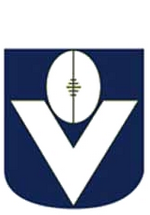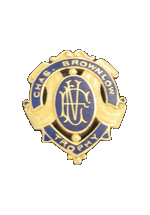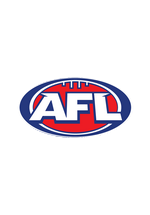The Evolution of the Australian Football League. 
the evolution of footy
marn grook
The name Marn Grook is given to the traditional games played at gatherings of up to fifty players, played over an extremely large area with games lasting up to 2 days.
At the end only one person was named the winner. The person who either kicks the furthest, jumps the highest or has the ball for the longest.
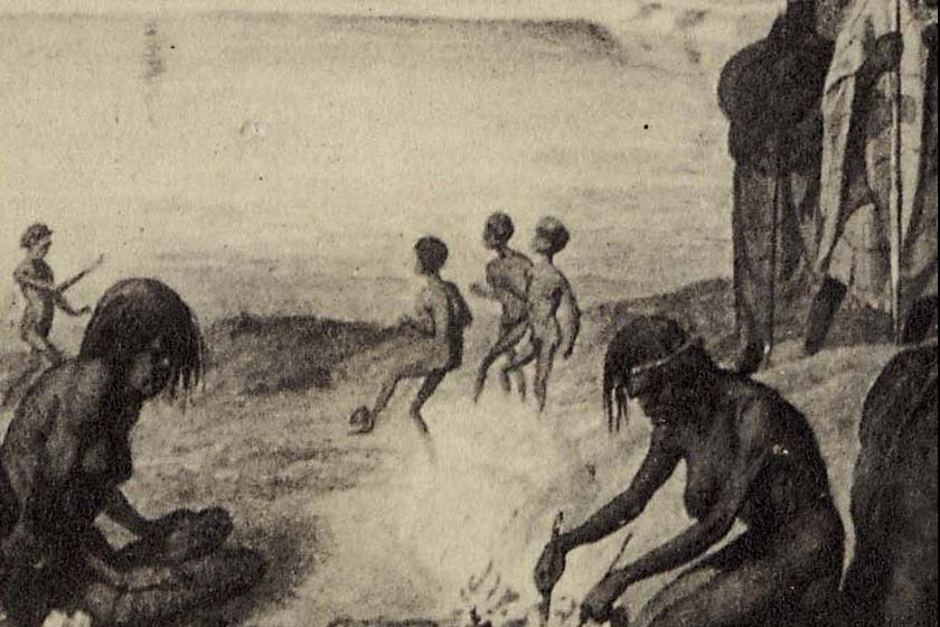
Marn Grook had a role in the formation of Australian rules football. Marngrook featured punt kicking and catching a ball made out of possum skin. And like Aussie Rules it's a contact sport between two teams that fight for possession of a ball with kicks and catches. It involved large numbers of players, and games were played over an extremely large area.
The game was not played tribe versus tribe. All tribes consisted of two halves often represented by the totemic symbols of Black Cockatoo and White Cockatoo. The tribes would divide themselves into the two teams based on the totem animal.
Here's where Marngrook starts to look more like Aussie Rules. Teams would come from all over and would be represented by different animal totems. Sound familiar?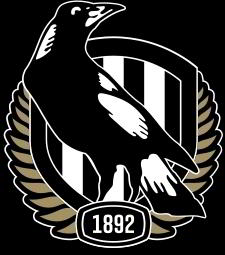
The game was subject to strict behavioural protocols and for instance all players had to be matched for size, gender and skin group relationship. However, to observers the game appeared to lack a team objective, having no real rules, or scoring. A winner could only be declared if one of the sides agreed that the other side had played better.
Individual players who consistently exhibited outstanding skills, such as leaping high over others to catch the ball, were often praised, but proficiency in the sport gave them no tribal influence.
Marngrook is also a free flowing game without an offside rule just like Aussie Rules. Then there's the mark. You catch the ball and you get a kick. It's the same in Marngrook.
In fact, the word for catch in Djab Warrung is Mumarkke or Mark for short. These similarities have led many people to believe there must be a shared history between Marngrook and Aussie Rules.
This connection has become culturally important to many people, including celebrities and professional footballers from communities in which Australian rules football is highly popular.
Aboriginal and Torres Strait Islander players from across the country have been some of the greats of the game.
They have had huge impacts on Aussie Rules throughout its history.
Currently Aboriginal and Torres Strait Islander people make up 10% of players in the men's AFL.
VFA
The Victorian Football Association was formed in 1877 and is the second-oldest Australian rules football league.
The VFA meetings were regularly held at Young and Jackson's Hotel in Flinders Street, the home of the VFA. Many of the most important events during this period happened at the hotel.
The five foundation senior clubs in the Melbourne metropolitan area were Albert Park (who amalgamated with South Melbourne), Carlton, Hotham (later North Melbourne), Melbourne and St Kilda.
Geelong was the most prominent provincial club, joining the Association in 1877 and playing regularly against metropolitan clubs by 1880.
The VFA became the secondary level of club competition from 1897 after its eight strongest clubs seceded to form the VFL.
From 1897 until 1995, the VFA remained independent from the VFL as Victoria's secondary senior club competition.
Although always much less popular than the VFL, the VFA enjoyed peaks of popularity in the 1940s with a faster-paced rival code of rules, and in the 1970s bolstered by playing on Sundays at a time when the VFL was played solely on Saturdays.
The VFA premiership served as the top level of club competition in Victoria until 1896.
VFL
On the eve of what was the first grand final representatives of leading VFA clubs met and agreed to establish a new competition the following season.
In October 1896, eight of the VFA's thirteen clubs seceded and established the Victorian Football League, which held it's inaugural season in 1897.
The VFL comprised the strongest clubs in Melbourne, in large part because its clubs were based in the more densely populated inner suburbs where potential gate takings were higher, while the VFA's clubs were generally based further from the city centre.
Thus the VFL became the pre-eminent football competition and administrative body in Victoria.
In 1896, South Melbourne and Collingwood finished the season with an identical win-loss record and the VFA ordered a play off to determine the premiers.
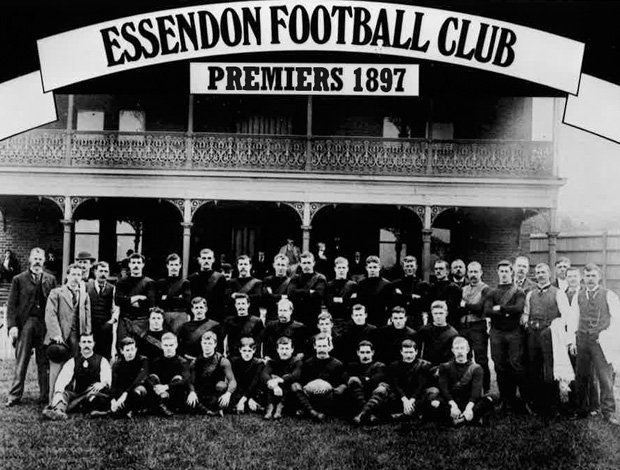
ANFC
The Australian National Football Council was the national governing body for Australian rules football in Australia from 1906 until 1995.
In 1890 the Australasian Football Council – the predecessor of the ANFC – had been formed to facilitate a growing number of intercolonial matches which at one point also included leagues and teams from NZ.
On 8 August 1949, the VFA agreed to affiliate with the ANFC.
In the early 1970s the council changed its name to the National Football League, but continued to operate in substantially the same way.
In 1977, the VFL established a rival competition to the NFL's night series, called the Australian Football Championships, and by 1980 this competition had replaced the NFL's competition.
The council was a body of delegates representing each of the sport's individual state leagues which controlled football in their states.
It was the owner of the laws of the game and managed interstate administrative and football matters. Its function was superseded by the AFL Commission in 1995.
AFL
The competition's name was changed to the Australian Football League in 1990 after expanding to other states in the '80s.
It is the pre-eminent professional competition and features 18 teams spread over five of Australia's six states.
It is the nation's wealthiest sporting body, and is responsible for controlling the laws of the game with the advice of the Laws of the Game Committee.
After the Southern Stand at the MCG opened in 1992, the AFL moved its headquarters into the complex.
It assisted with financing the new stand and came to an agreement that ensures at least 45 games are played at the venue each year, including the Grand Final in September.
| Club | Home Ground(s) |
|---|---|
| Adelaide | Adelaide Oval |
| Brisbane | The Gabba |
| Carlton | Docklands Stadium, MCG |
| Collingwood | Melbourne Cricket Ground |
| Essendon | Docklands Stadium, MCG |
| Fremantle | Perth Stadium |
| Geelong | Kardinia Park |
| Gold Coast Suns | Carrara Stadium |
| GWS Giants | Sydney Showground, Manuka Oval |
| Hawthorn | Melbourne Cricket Ground, York Park |
| North Melborne | Docklands, Bellerive Oval |
| Melbourne | Melbourne Cricket Ground |
| Port Adelaide | Adelaide Oval |
| Richmond | Melbourne Cricket Ground |
| St Kilda | Docklands Stadium |
| Sydney | SCG, Stadium Australia |
| West Coast | Perth Stadium |
| Western Bulldogs | Docklands Stadium |

